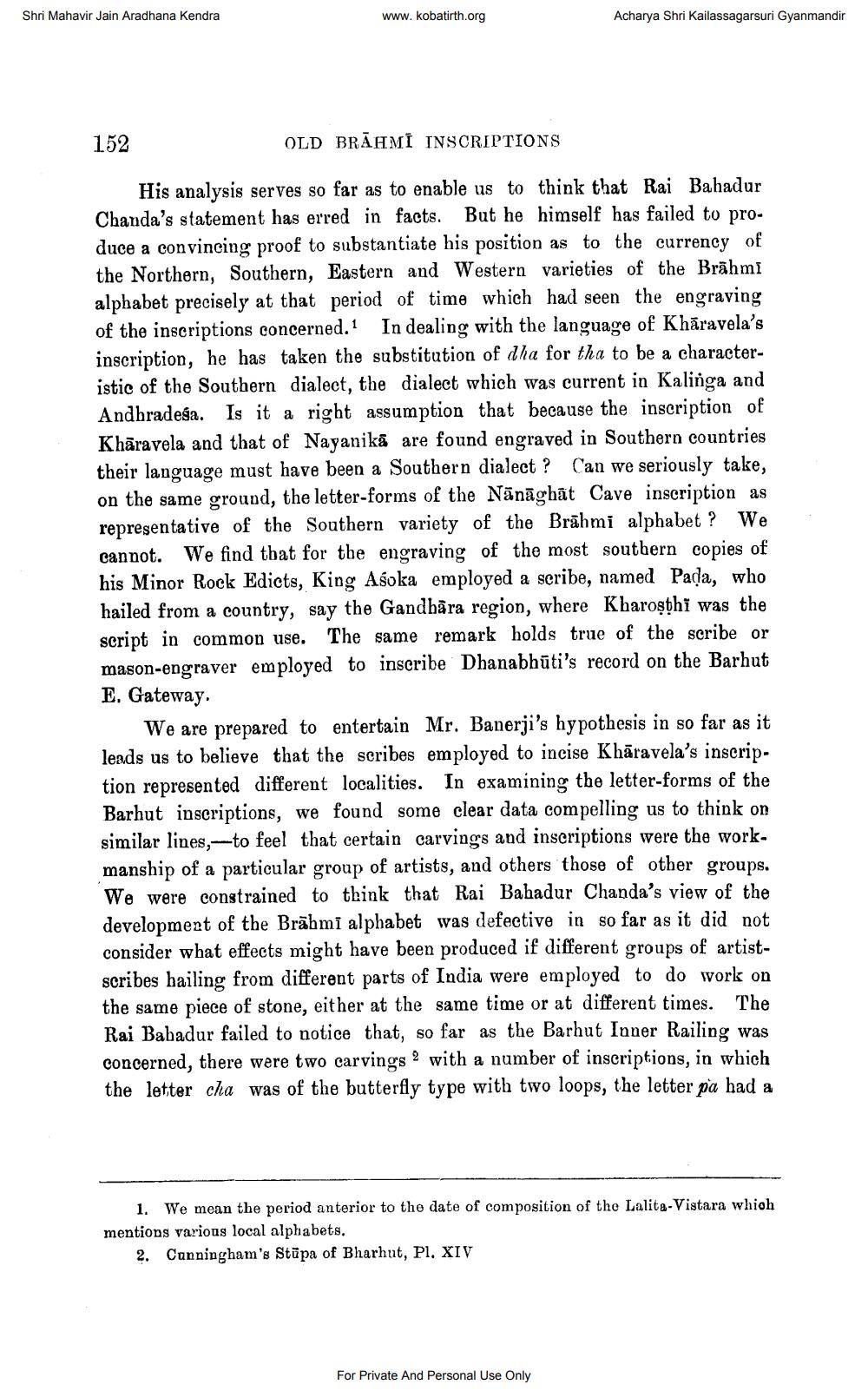________________
Shri Mahavir Jain Aradhana Kendra
www.kobatirth.org
Acharya Shri Kailassagarsuri Gyanmandir
152
OLD BRĀHMI INSCRIPTIONS
His analysis serves so far as to enable us to think that Rai Bahadur Chanda's statement has erred in facts. But he himself has failed to produce a convincing proof to substantiate his position as to the currency of the Northern, Southern, Eastern and Western varieties of the Brāhmi alphabet precisely at that period of time which had seen the engraving of the inscriptions concerned." In dealing with the language of Khāravela's inscription, he has taken the substitution of dha for tha to be a characteristic of the Southern dialect, the dialect which was current in Kalinga and Andhradeśa. Is it a right assumption that because the inscription of Khāravela and that of Nayanikā are found engraved in Southern countries their language must have been a Southern dialect ? Can we seriously take, on the same ground, the letter-forms of the Nānāghāt Cave inscription as representative of the Southern variety of the Brāhmi alphabet ? We cannot. We find that for the engraving of the most southern copies of his Minor Rock Edicts, King Asoka employed a scribe, named Pada, who hailed from a country, say the Gandhāra region, where Kharoşthi was the script in common use. The same remark holds true of the scribe or mason-engraver employed to inscribe Dhanabhūti's record on the Barhut E. Gateway.
We are prepared to entertain Mr. Banerji's hypothesis in so far as it leads us to believe that the scribes employed to incise Khāravela's inscription represented different localities. In examining the letter-forms of the Barhut inscriptions, we found some clear data compelling us to think on similar lines,-to feel that certain carvings and inscriptions were the work. manship of a particular group of artists, and others those of other groups. We were constrained to think that Rai Bahadur Chanda's view of the development of the Brāhmi alphabet was defective in so far as it did not consider what effects might have been produced if different groups of artistscribes hailing from different parts of India were employed to do work on the same piece of stone, either at the same time or at different times. The Rai Babadur failed to notice that, so far as the Barhut Inner Railing was concerned, there were two carvings 2 with a number of inscriptions, in which the letter cha was of the butterfly type with two loops, the letter pa had a
1. We mean the period anterior to the date of composition of the Lalita-Vistara which mentions various local alphabets.
2. Cunningham's Stāpa of Bharhut, PI, XIV
For Private And Personal Use Only




